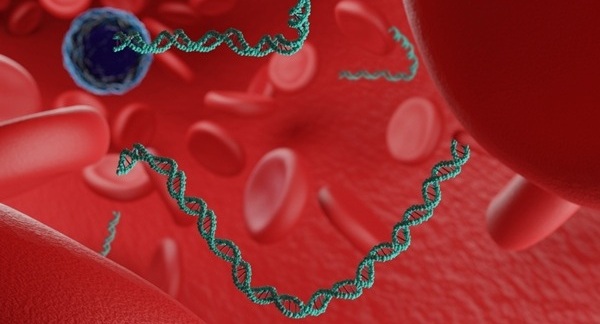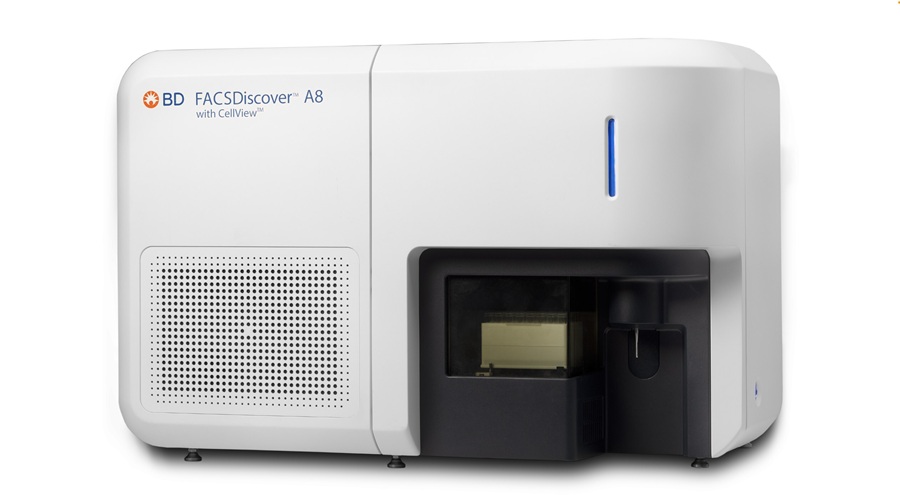Blood Glucose Determinations Differ in Plasma and Serum
|
By LabMedica International staff writers Posted on 05 Jul 2012 |
Blood glucose determination is one of the most common clinical diagnostic tests and accurate and precise measurement of blood glucose is of great importance in the diagnosis and management of diabetes.
The concentration of glucose in the blood will continue to decrease over time after phlebotomy because of glycolysis, which will occur in erythrocytes, white blood cells (WBCs), and platelets as these cells can continue to metabolize glucose.
Laboratory scientists at the University of Mysore, (Manasagangotri, India) investigated the effect of time and the method of processing of blood on the blood glucose levels. Blood from 30 different patients who came for routine blood glucose determination were used in the study. Whole blood was divided into three portions. One portion was allowed to clot. To the second portion, 2mg/mL sodium fluoride was added, and to the third portion, ethylene diamine tetra acetic acid (EDTA)–disodium salt was added.
Blood sugar was estimated using a blood sugar assay kit (Becton Dickinson, Bangalore, India). Optical Density (OD) of the colored complex was measured at 620 nm in an autoanalyzer. Blood sugar in these samples stored at room temperature was measured again after four hours and eight hours. The serum gave values lower than fluoride plasma by 1.15%. Although this difference was statistically significant, it may not be physiologically relevant. On storing the sample at room temperature for eight hours, the serum glucose value decreased by 8% and even fluoride plasma had 4.3% lower glucose.
The authors concluded that blood glucose should be determined within as short a time as possible after drawing the blood. The blood glucose values ranged from 76 to 410 mg/dL covering a wide range of blood glucose values that would be seen in any sample analysis. Serum may be a better sample for blood glucose determination particularly when there is a time delay in the measurement. If appropriate correction is applied, it may actually be a better sample than plasma. Moreover, many clinical analysis procedures require serum rather than plasma and therefore one single drawing of blood may suffice for even blood glucose estimation. The study was published online on May 14, 2012, in the Journal of Clinical Laboratory Analysis.
Related Links:
University of Mysore
Becton Dickinson
The concentration of glucose in the blood will continue to decrease over time after phlebotomy because of glycolysis, which will occur in erythrocytes, white blood cells (WBCs), and platelets as these cells can continue to metabolize glucose.
Laboratory scientists at the University of Mysore, (Manasagangotri, India) investigated the effect of time and the method of processing of blood on the blood glucose levels. Blood from 30 different patients who came for routine blood glucose determination were used in the study. Whole blood was divided into three portions. One portion was allowed to clot. To the second portion, 2mg/mL sodium fluoride was added, and to the third portion, ethylene diamine tetra acetic acid (EDTA)–disodium salt was added.
Blood sugar was estimated using a blood sugar assay kit (Becton Dickinson, Bangalore, India). Optical Density (OD) of the colored complex was measured at 620 nm in an autoanalyzer. Blood sugar in these samples stored at room temperature was measured again after four hours and eight hours. The serum gave values lower than fluoride plasma by 1.15%. Although this difference was statistically significant, it may not be physiologically relevant. On storing the sample at room temperature for eight hours, the serum glucose value decreased by 8% and even fluoride plasma had 4.3% lower glucose.
The authors concluded that blood glucose should be determined within as short a time as possible after drawing the blood. The blood glucose values ranged from 76 to 410 mg/dL covering a wide range of blood glucose values that would be seen in any sample analysis. Serum may be a better sample for blood glucose determination particularly when there is a time delay in the measurement. If appropriate correction is applied, it may actually be a better sample than plasma. Moreover, many clinical analysis procedures require serum rather than plasma and therefore one single drawing of blood may suffice for even blood glucose estimation. The study was published online on May 14, 2012, in the Journal of Clinical Laboratory Analysis.
Related Links:
University of Mysore
Becton Dickinson
Latest Clinical Chem. News
- Compact Raman Imaging System Detects Subtle Tumor Signals
- Noninvasive Blood-Glucose Monitoring to Replace Finger Pricks for Diabetics
- POC Breath Diagnostic System to Detect Pneumonia-Causing Pathogens
- Online Tool Detects Drug Exposure Directly from Patient Samples
- Chemical Imaging Probe Could Track and Treat Prostate Cancer
- Mismatch Between Two Common Kidney Function Tests Indicates Serious Health Problems
- VOCs Show Promise for Early Multi-Cancer Detection
- Portable Raman Spectroscopy Offers Cost-Effective Kidney Disease Diagnosis at POC
- Gold Nanoparticles to Improve Accuracy of Ovarian Cancer Diagnosis
- Simultaneous Cell Isolation Technology Improves Cancer Diagnostic Accuracy
- Simple Non-Invasive Hair-Based Test Could Speed ALS Diagnosis
- Paper Strip Saliva Test Detects Elevated Uric Acid Levels Without Blood Draws
- Prostate Cancer Markers Based on Chemical Make-Up of Calcifications to Speed Up Detection
- Breath Test Could Help Detect Blood Cancers
- ML-Powered Gas Sensors to Detect Pathogens and AMR at POC
- Saliva-Based Cancer Detection Technology Eliminates Need for Complex Sample Preparation
Channels
Molecular Diagnostics
view channel
Blood Test Could Identify Biomarker Signature of Cerebral Malaria
Malaria remains a major cause of death and long-term disability in many low- and middle-income countries, with around 600,000 deaths reported globally each year. The most severe form, cerebral malaria,... Read more
World’s First Biomarker Blood Test to Assess MS Progression
Multiple sclerosis (MS) disease activity is caused by an abnormal immune response that results in damage to the brain and spinal cord. However, there is a lack of reliable tools to measure or predict MS progression.... Read moreHematology
view channel
MRD Tests Could Predict Survival in Leukemia Patients
Acute myeloid leukemia is an aggressive blood cancer that disrupts normal blood cell production and often relapses even after intensive treatment. Clinicians currently lack early, reliable markers to predict... Read more
Platelet Activity Blood Test in Middle Age Could Identify Early Alzheimer’s Risk
Early detection of Alzheimer’s disease remains one of the biggest unmet needs in neurology, particularly because the biological changes underlying the disorder begin decades before memory symptoms appear.... Read more
Microvesicles Measurement Could Detect Vascular Injury in Sickle Cell Disease Patients
Assessing disease severity in sickle cell disease (SCD) remains challenging, especially when trying to predict hemolysis, vascular injury, and risk of complications such as vaso-occlusive crises.... Read more
ADLM’s New Coagulation Testing Guidance to Improve Care for Patients on Blood Thinners
Direct oral anticoagulants (DOACs) are one of the most common types of blood thinners. Patients take them to prevent a host of complications that could arise from blood clotting, including stroke, deep... Read moreImmunology
view channel
Ultrasensitive Liquid Biopsy Demonstrates Efficacy in Predicting Immunotherapy Response
Immunotherapy has transformed cancer treatment, but only a small proportion of patients experience lasting benefit, with response rates often remaining between 10% and 20%. Clinicians currently lack reliable... Read more
Blood Test Could Identify Colon Cancer Patients to Benefit from NSAIDs
Colon cancer remains a major cause of cancer-related illness, with many patients facing relapse even after surgery and chemotherapy. Up to 40% of people with stage III disease experience recurrence, highlighting... Read moreMicrobiology
view channel
New UTI Diagnosis Method Delivers Antibiotic Resistance Results 24 Hours Earlier
Urinary tract infections affect around 152 million people every year, making them one of the most common bacterial infections worldwide. In routine medical practice, diagnosis often relies on rapid urine... Read more
Breakthroughs in Microbial Analysis to Enhance Disease Prediction
Microorganisms shape human health, ecosystems, and the planet’s climate, yet identifying them and understanding how they are related remains a major scientific challenge. Even with modern DNA sequencing,... Read morePathology
view channel
Genetics and AI Improve Diagnosis of Aortic Stenosis
Aortic stenosis is a progressive narrowing of the aortic valve that restricts blood flow from the heart and can be fatal if left untreated. There are currently no medical therapies that can prevent or... Read more
AI Tool Simultaneously Identifies Genetic Mutations and Disease Type
Interpreting genetic test results remains a major challenge in modern medicine, particularly for rare and complex diseases. While existing tools can indicate whether a genetic mutation is harmful, they... Read more
Rapid Low-Cost Tests Can Prevent Child Deaths from Contaminated Medicinal Syrups
Medicinal syrups contaminated with toxic chemicals have caused the deaths of hundreds of children worldwide, exposing a critical gap in how these products are tested before reaching patients.... Read more
Tumor Signals in Saliva and Blood Enable Non-Invasive Monitoring of Head and Neck Cancer
Head and neck cancers are among the most aggressive malignancies worldwide, with nearly 900,000 new cases diagnosed each year. Monitoring these cancers for recurrence or relapse typically relies on tissue... Read moreTechnology
view channel
AI Predicts Colorectal Cancer Survival Using Clinical and Molecular Features
Colorectal cancer is one of the most common and deadly cancers worldwide, and accurately predicting patient survival remains a major clinical challenge. Traditional prognostic tools often rely on either... Read more
Diagnostic Chip Monitors Chemotherapy Effectiveness for Brain Cancer
Glioblastoma is one of the most aggressive and fatal brain cancers, with most patients surviving less than two years after diagnosis. Treatment is particularly challenging because the tumor infiltrates... Read moreIndustry
view channel
BD and Penn Institute Collaborate to Advance Immunotherapy through Flow Cytometry
BD (Becton, Dickinson and Company, Franklin Lakes, NJ, USA) has entered into a strategic collaboration with the Institute for Immunology and Immune Health (I3H, Philadelphia, PA, USA) at the University... Read more




 assay.jpg)














